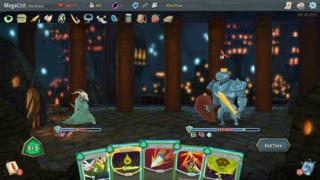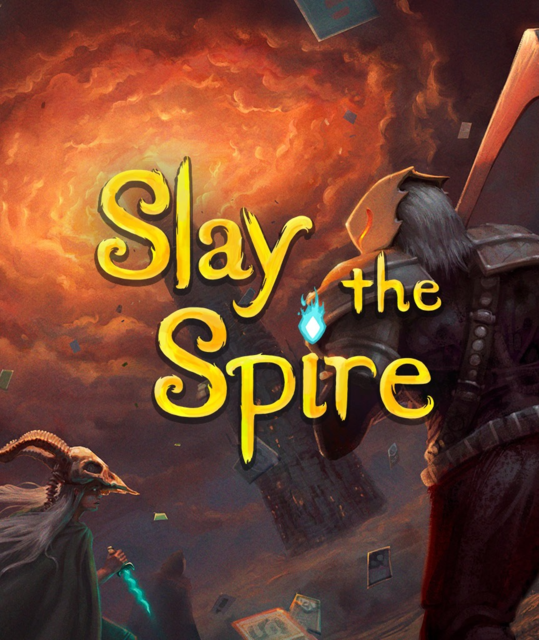Risk and Reward in the Spire
Slay the Spire (StS) is a clever and well polished single player card battler with roguelike elements. A deck-building card combat game combined with a turn-based, run-based game is a match that makes perfect sense. Both game types are about RNG mitigation: the game throws random things at you, and you must use strategy to exploit the beneficial items you find and try to survive unlucky circumstances. And in this game, an unlucky circumstance often means literally being dealt a bad hand.

StS is a run-based permadeath game, with each run consisting of just 50 to 54 "floors," each floor being a single combat, shop, or event. You start each run with a default deck of about 12 cards, and you may add one of three random cards after every combat. Occasionally you will also have the opportunity to remove a card, which can be just as important. Every run truly is an exercise in deck building, as you must strategically modify your deck throughout, with different considerations in the beginning, middle, and end of a run.
Each of the three character classes has its own selection of about 75 cards. Each class has a different but well-balanced set of strengths and synergies developed over the course of the game's early access period, as the developers collected data from players' runs and used that to tweak cards and monsters.
As balanced as it is, StS isn't afraid to allow overpowered combos. After all, this isn't a competitive multiplayer game, so why forbid fun stuff like infinite combos or outrageously high damage scaling? However, you'll need quite a bit of luck and strategy to make this happen, so don't expect to put together such a deck in most runs.

Great roguelikes reveal deeper complexity when their items, skills and monsters interact with each other in unforeseen ways. StS follows this tradition. In addition to a wide variety of cards, you will also find random potions and relics, items that bestow passive effects or are triggered by certain events. Even after playing many runs with each character, I was still discovering new synergies (and sometimes anti-synergies) that came from rare combinations of cards and relics.
FTL was an influence in the design of the strategic layer, as seen in the branching paths across the map and the non-combat events, which are presented in choose-your-own-adventure style. The text and illustrations in these events add to the world building and provide quite a bit of humor to the setting.
The game has a unique visual style that kind of looks like an indie comic if it was painted by Henri Rousseau. Although its aesthetics may not appeal to everyone, the character designs are sometimes inventive and surreal. Among the most memorable are the geometric forms of bosses Donu and Deca and the weird silhouette of the Defect class, who is basically a magical robot. Ultimately, even if you dislike the visual style, that shouldn't dissuade you from enjoying this game on the strength of its gameplay alone.
With a combination of clever design, polished gameplay and features, and quirky tone, Slay the Spire is a great merger of deck-building and roguelike.
